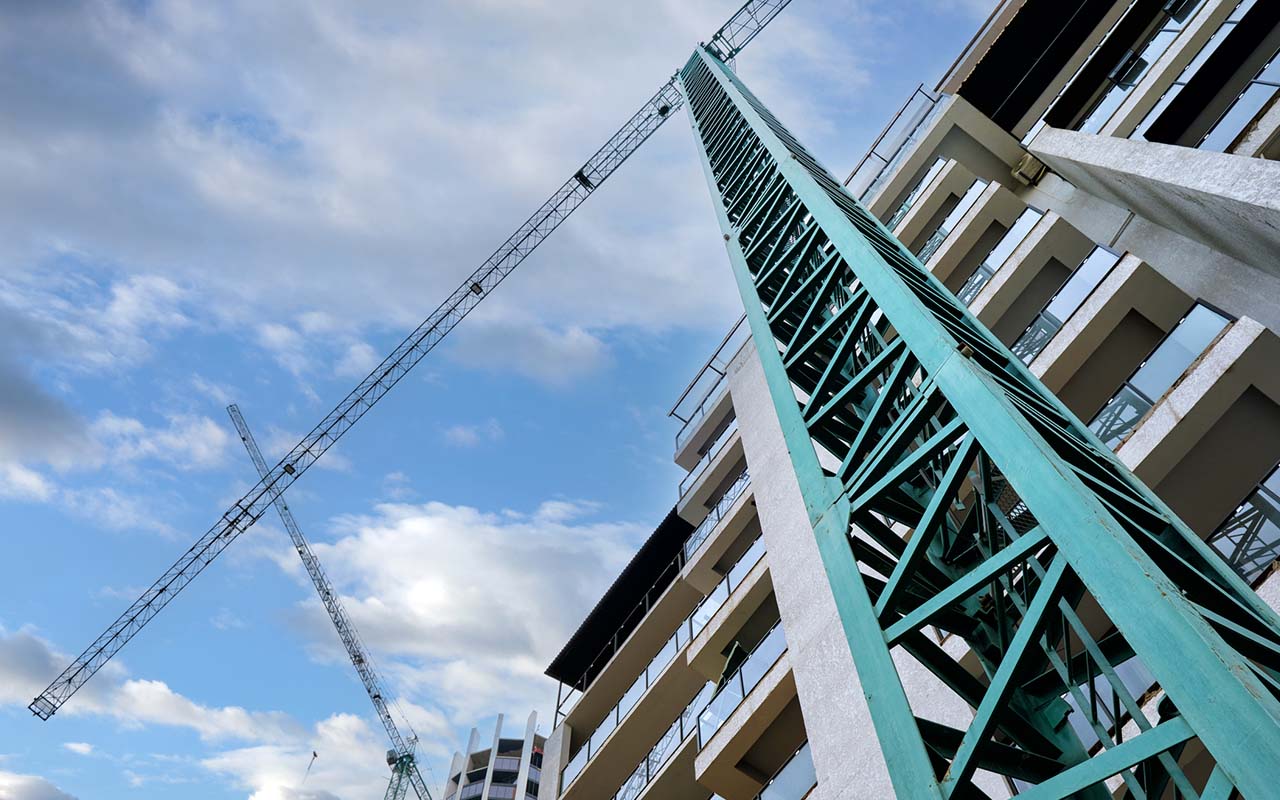May 11, 2020
Navigating and Implementing the New Title IX Rules – Policies, Trainings, and Campus Communication Strategies
On May 6, 2020, after a two-year drafting process, the U.S. Department of Education (“DOE”) released its new and revised Title IX regulations[1] (the “Final Rule”), significantly expanding and defining educational institutions’ regulatory obligations for responding to and addressing alleged sexual harassment and misconduct within education programs and activities. Unlike the prior Obama administration Title IX guidelines, these regulations have the force of law and, unless enjoined by a Court, must be implemented (as applicable) by schools by the effective date of August 14, 2020.
The Nelson Mullins Education Team’s initial assessment follows below. We also invite you to a complimentary webinar on May 20 during which we will discuss these topics and related strategies for education institutions in more detail. You can register HERE
or by clicking on the link at the bottom of this page.
What do the new regulations do?
The regulations impose a burdensome disciplinary scheme on schools that, in most circumstances, must be followed and that, in certain circumstances, may hamper colleges from effectively addressing alleged harassment. Navigating those issues and implementing the often-overbearing regulations that require academic institutions to build judicial ecosystems – in three months – will be tremendously challenging. Shared thought leadership is necessary in this environment; we offer our initial perspectives below.
Jurisdictional requirements
As an initial matter, the Final Rule sets forth jurisdictional requirements that trigger a school’s Title IX obligations. Under 34 C.F.R. § 106.44(a), if a school has “actual knowledge” of “sexual harassment” within its “education program or activity” “against a person in the United States,” it “must respond promptly in a manner that is not deliberately indifferent,” or “clearly unreasonable in light of the known circumstances.” This standard originates from the “deliberate indifference” standard of institutional liability under the U.S. Supreme Court’s 1999 case Davis v. Monroe County Board of Education, 526 U.S. 629 (1999), the formative student-on-student sexual harassment case under Title IX.
The Final Rule defines “sexual harassment” to include only three categories of behavior: (1) quid pro quo sexual harassment by a college employee; (2) sexual assault, dating violence, domestic violence and stalking, as defined under the Clery Act; and (3) “unwelcome conduct determined by a reasonable person to be so severe, pervasive, and objectively offensive that it effectively denies a person equal access to the [school’s] education program or activity.” 34 C.F.R. § 106.30. The latter category, though narrower than common Title VII standards, is consistent with the Title IX standard for actionable harassment under Davis.
Comments:
- If sexual harassment is alleged to have occurred outside of the defined jurisdiction, such as off-campus behavior that has an on-campus effect, or alleged behavior during a study abroad program, the school may address it through a separate Code of Conduct policy and procedure.
- Similarly, if alleged behavior falls outside the regulation’s definition of “sexual harassment” (e.g., physical harassment that falls short of the Clery definitions and many forms of non-physical sexual harassment), the school may address it outside of DOE’s regulatory scheme.
- However, if the alleged conduct falls within DOE’s jurisdictional statement, above, schools seemingly must follow the new regulatory scheme.
“A recipient’s response [to defined “sexual harassment”] must treat complainants and respondents equitably by offering supportive measures as defined in § 106.30 to a complainant, and by following a grievance process that complies with § 106.45 before the imposition of any disciplinary sanctions or other actions that are not supportive measures as defined in § 106.30, against a respondent.” 34 C.F.R. § 106.44(a). “With or without a formal complaint, a recipient must comply with § 106.44(a).” 34 C.F.R. § 106.44(b). - Given the expected paucity of formal complaints under DOE’s imposing grievance process, which again “must” be followed “before the imposition of any disciplinary sanctions . . . against a respondent” for defined “sexual harassment” (discussed further below), one of the main issues for schools to address in the coming weeks will be determining what alleged behavior can be excluded from DOE’s regulatory scheme.
A school’s response obligations under the new regulations are also limited to when a school has “actual knowledge” of sexual harassment, which is defined as “notice of sexual harassment or allegations of sexual harassment to a [school’s] Title IX Coordinator or any official of the [school] who has authority to institute corrective measures on behalf of the [school] . . . . [C]onstructive notice is insufficient to constitute actual knowledge.” 34 C.F.R. § 106.30(a). This is a narrower group of employees and staff than many colleges currently include within their mandatory reporter or responsible employee policies, and the standard is narrower than prior DOE guidance dating back to at least 2001. However, it is consistent with U.S. Supreme Court precedent under Davis, 526 U.S. at 642, and Gebser v. Lago Vista Ind. Sch. Dist., 524 U.S. 274, 290 (1998). (It should also be noted that the notice standard for K-12 schools differs greatly under the new regulations, which will result in a dramatic shift for primary and secondary schools. Nelson Mullins will issue a separate alert for K-12 schools.)
Comment:
- Colleges should revisit their mandatory reporter policies.
Considering the pushback many schools faced from faculty and staff towards their broader mandatory reporter policies, as well as widespread issues with individual mandatory reporters who failed or refused to follow the broader policies, it may be appropriate now to shift policies and training from mandated reporting to encouraged reporting. This is moreso true in light of the limitations DOE has placed on colleges’ abilities to respond to non-formal complaints. Schools should consider attempting to decrease their potential liability arising from individuals who were most likely to not report in the past and who are no longer legally obligated to report.
Supportive measures
DOE’s requirement to provide supportive measures, with or without a formal complaint, appears to be a focus of the new regulations. Supportive measures are defined as “non-disciplinary, non-punitive individualized services” that “are designed to restore or preserve equal access to the [school’s] education program or activity” for an alleged victim or other person. 34 C.F.R. § 106.30(a). This is consistent with Title IX’s statutory basis, which focused on improving the equity of educational opportunities: “No person in the United States shall, on the basis of sex, be excluded from participation in, be denied the benefits of, or be subjected to discrimination under any education program or activity receiving Federal financial assistance.” 20 U.S.C. § 1681.
The new regulations specify that supportive measures should be “designed to protect the safety of all parties or the [school’s] educational environment, or deter sexual harassment,” but they should not “unreasonably burden the other party.” 34 C.F.R. § 106.30(a). Supportive measures should be offered for free and should remain “confidential … to the extent that maintaining such confidentiality would not impair the ability of the [school] to provide the supportive measures.” Id. They must be offered “promptly” and “in a manner that is not deliberately indifferent.” 34 C.F.R. § 106.44(a).
Comment:
- Colleges should focus heavily on providing supportive measures, including by outlining available measures in their Title IX policies and by focusing on providing individualized support to students and others as needed. Some example supportive measures are listed in 34 C.F.R. § 106.30(a), and schools often have more exhaustive lists already accumulated under existing policies.
The new Title IX grievance process
Initiating the process via a Formal Complaint
While supportive measures seem to be key to the new system, the DOE-imposed formal grievance process will make possible disciplinary measures much more difficult to address. Where the jurisdictional requirements are present, the Final Rule now requires colleges to administer a formal “grievance process that complies with § 106.45 before the imposition of any disciplinary sanctions or other actions … against a respondent” beyond supportive measures. 34 C.F.R. § 106.44(a) (emphasis added); 34 C.F.R. § 106.45(b)(1)(i); see also 34 C.F.R. § 106.8(c). A “formal complaint” alleging sexual harassment also must be initiated before a grievance process can be initiated. See 34 C.F.R. § 106.45. A “formal complaint” is a (1) a document (2) filed by an alleged victim or signed by the Title IX Coordinator, (3) alleging “sexual harassment” (4) against an alleged harasser and (5) “requesting that the [school] investigate the allegation of sexual harassment.” 34 C.F.R. § 106.30. This document plays an exceedingly critical role in the new Title IX process – a college cannot impose discipline for sexual harassment without following a grievance process compliant with 34 C.F.R. § 106.45, and it cannot initiate the grievance process without a formal complaint. For alleged victims, the formal complaint definition in the new regulations is broad – any time an investigation is requested – and is much broader than the proposed definition in DOE’s 2018 draft regulations. But the definition excludes third-party roommates and witnesses from being able to file reports that would initiate a school’s investigation and grievance process without the Title IX Coordinator’s assent.
To initiate a formal complaint, however, the alleged victim “must be participating in or attempting to participate in [the school’s] education program or activity.” 34 C.F.R. § 106.30. At this point, it is unclear whether the Title IX Coordinator could “sign” a formal complaint without the victim’s continued participation (or attempted participation) in the school’s programs and activities, such as when a victim has withdrawn from school, perhaps due to the trauma of a sexual assault.[2]
The Grievance Process
Although aspects of DOE’s prescribed grievance process are certainly controversial, they appear to be legally required as of August 14, 2020. We encourage schools to review the Title IX regulations for full details. Schools should prepare to adopt and implement these regulations for the fall semester in order to address Formal Complaints, and to schedule detailed trainings so that relevant staff and employees are prepared to carry out their requirements.
A few aspects of the regulations deserve comment:
- The single investigator model appears to be dead. That model had become controversial after multiple court decisions questioned its legal efficacy, but it now appears to be prohibited by the Final Rule: not only is a hearing required, but an adjudicative decision-maker “cannot be the same person(s) as the Title IX Coordinator or the investigator(s).” 34 C.F.R. § 106.45(b)(7).
- That said, given the new jurisdictional requirements, it appears Title IX Coordinators are required to make threshold determinations. Further, dismissal of a Formal Complaint for lack of jurisdiction “does not preclude action under another provision of the [school’s] code of conduct.” 34 C.F.R. § 106.45(b)(3).
- The Final Rule requires schools to build judicial ecosystems – in three months, during a pandemic, and while facing budget crises. These provisions are problematic in scope, misunderstand the academic mission, and are impractical – yet, they appear to be legally required. Schools are required to have multiple people ready to serve in separate roles during a formal grievance process: a Title IX Coordinator, an investigator, an adjudicator, an appeals adjudicator, and people to potentially serve as advisors for both claimants and respondents. Each such person will need to be trained to serve in their role under the new Title IX regulations in time for the fall semester.
- The Final Rule requires hearings and cross-examination opportunities before responsibility and discipline can be determined. “For postsecondary institutions, the [school’s] grievance process must provide for a live hearing” during which “each party’s advisor” must be permitted “to ask the other party and any witnesses all relevant questions and follow-up questions, including those challenging credibility. Such cross-examination at the live hearing must be conducted directly, orally, and in real time by the party’s advisor of choice.” 34 C.F.R. § 106.45(b)(6)(i).
- While many schools have adopted hearings and customized forms of cross examination in the last few years, particularly after the Sixth Circuit decided Doe v. Baum, 903 F.3d 575 (6th Cir. 2018), few schools currently permit attorneys and advisors to directly conduct cross examinations of students, in recognition that the hearing process is often intimidating for both claimants and respondents. While the Final Rule prohibits claimants and respondents from conducting cross examinations themselves, 34 C.F.R. § 106.45(b)(6)(i), the prospect of having an attorney conduct the cross examination is likely no less intimidating for a student.
- “If a party does not have an advisor present at the live hearing, the [school] must provide without fee or charge to that party, an advisor of the [school’s] choice.” Id. Given that cross examination must be conducted by the advisor and not the party, this is an important provision for schools to consider. This provision seemingly necessitates that the school walk the line between facilitating a necessarily-biased position – appointing someone to advocate for one party – while siloing that person and remaining unbiased as an institution. Notwithstanding that inherent conflict, this term appears to be legally required.
- Faculty or staff serving in adjudicative roles must make evidentiary relevance determinations, exclude hearsay evidence that commonly would be admissible in court, and “issue a written determination regarding responsibility.” See 34 C.F.R. § 106.45(b)(6)(i), (b)(7). Before a “witness answers a cross-examination or other question, the decision-maker(s) must first determine whether the question is relevant and explain any decision to exclude a question as not relevant.” 34 C.F.R. § 106.45(b)(6)(i). This will require training on concepts of legal process before a school can appoint faculty or staff to conduct an adjudicative hearing this fall.
Informal resolution:
Informal resolution is also restricted under the Final Rule, as a school “may not offer an informal resolution process unless a formal complaint is filed.” 34 C.F.R. § 106.45(b)(9). If the parties thereafter voluntarily agree to an informal resolution, schools appear to have flexibility in their implementation of informal resolution processes. See id. Informal resolution is not available “to resolve allegations that an employee sexually harassed a student.” 34 C.F.R. § 106.45(b)(9)(iii).
Comments:
- In reality, we expect many complainants will not want to endure attorney cross-examinations and the other formalities of DOE’s formal grievance process, just to see school discipline enacted (which would be separate from any criminal justice process). We expect that Formal Complaints will cover only a fraction of alleged sexual assaults involving college students. But without a Formal Complaint, a college may be limited in its ability to investigate, and may be restricted in its ability to address and discipline, sexual misconduct. Further, if students are sufficiently discouraged from making reports, schools may be inhibited from offering supportive measures to mitigate the effects of sexual misconduct.
Next Steps
The new regulations are complicated and onerous, but they are set to take effect on August 14. Thus, schools should begin now to take the following steps:
- We recommend that schools communicate with their campus communities to continue to encourage reports. The new regulations may change the way that we address certain reports, but bringing forward information about possible sexual misconduct so that we can address it under law remains vital to our mission.
- Update school policies and procedures.
- Title IX policies and procedures
- Code of Conduct
- Mandatory Reporter policies
- Training will be crucial prior to the mid-August implementation date.
- Title IX Coordinator office staff and investigators
- Adjudicators and appeals adjudicators
- Advisors to be appointed for both Complainants and Respondents
- All faculty and staff, to explain the new mandatory reporter policies
- All students, to understand the new regulations and school policies
- Build up available supportive measures.
In theory, a school should not be liable under Title IX as long as it follows DOE’s regulatory scheme – even the misguided parts – but that is cold comfort.
On May 20, Nelson Mullins will be hosting a webinar to further explore how schools can develop their policies, processes, and training programs to comply with their ideals as well as the Final Rule’s provisions. We hope you will join us.
Wednesday, May 20, 2020 | 11 a.m.-12 p.m.
Webinar link to be provided after registration.
Click here to register
[1] https://www2.ed.gov/about/offices/list/ocr/docs/titleix-regs-unofficial.pdf. Following 2,007 pages of preamble, the regulations begin on page 2,008.






